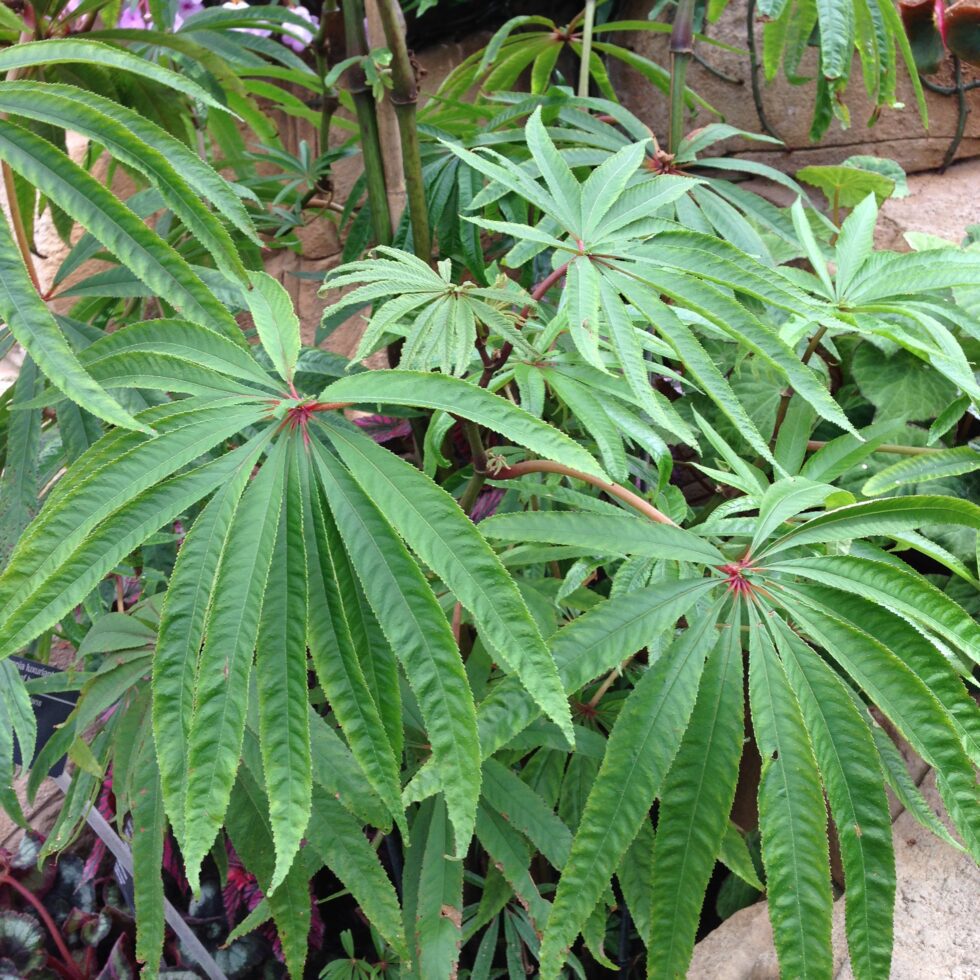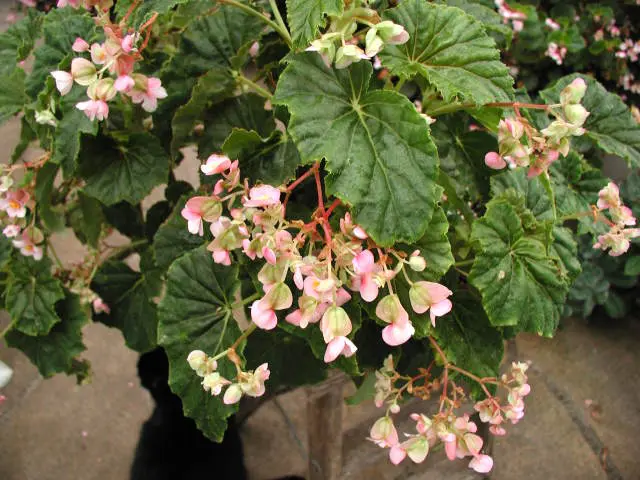A large, diverse group, the shrub-like begonias offer interesting foliage, including some velvety leaves, as well as mostly seasonal flowers in pink, cream, or white (a few salmon- and peach-flowering cultivars exist). Some shrub-like plants are grown for the leaves, a few for the flowers, and many for both.
These plants range from about 10 inches tall to B. luxurians, whose stems may reach 8 feet or more. Some people have trouble telling them from cane-like begonias, but there are two usually reliable differences: shrub-like begonias branch readily and their stems don’t have the woody, bamboo-like appearance with swollen joints that cane-like begonias do.
The group is divided into three classes: those with bare leaves, those with hairy leaves, and those with “distinctive foliage.” The last group is subdivided further, into those with unusual surface or coloring, those similar to B. listida, and the compact ones.
Many of the 250 or so plants in this group are grown fairly widely, so you are likely to run into several hundred names. Some of the most popular are B. acida, B. ‘Argenteo-guttata’, B. ‘Catalina’, B. ‘D’Artagnon’, B. echinosepala, B. foliosa, B. ‘Hazel Snodgrass’, B. ‘Medora’, B. metallica, B. ‘Murray Morrison’, B. olsoniae, B. scharffii, B. species ex Kew, B. ‘Thurstonii’, and B. venosa.
Light is important with shrub-like begonias but the amount needed varies among them. Too much will bleach leaves, but too little will elongate plants and discourage bloom. As a rule, provide as much light or sunlight as a plant will take without showing unhealthy symptoms, but avoid hottest midday sun. Bare-leaved plants can take more light and sunlight than hairy-leaved ones. In an area where the sun is intense and summer temperatures are consistently hot, provide broken shade under a tree or a lath structure.
The tallest of these plants require large containers — wooden tubs or big clay pots. Or they can be planted in the ground in a mild winter climate or where dug up for winter. The best planting mix is the usual loose, coarse begonia mix. Smaller shrub-like begonias can be planted in hanging baskets (especially if they have lax stems) or standard-sized pots. They can be displayed indoors any time of year. A few should be plantedin terrariums to meet their high-humidity requirements.
Watch your watering. These begonias need just enough water to keep the leaves crisp. Too much will rot the leaves and stems, which often are very succulent. Be sure the top of the planting mix is dry to the touch before watering.
The blooming period varies from plant to plant in this group. Learn when your particular species or cultivar blooms, then schedule fertilizing to make the best of it. During the whole growing season, a complete fertilizer should be applied according to label directions — or at half-strength twice as often. One month before bloom is to start, apply a dose of high-phosphorus (such as 0-10-10) fertilizer to boost flowering. Continue its use through the bloom period.
No insects or diseases are partial to shrub-like begonias other than those which may infest begonias generally. The usual rules apply — diagnose carefully and use the least toxic remedy that will work. Always follow label directions exactly. Or, if you prefer, maintain a frequent-spray preventive program.
You’ll be able to tell if a plant needs pruning or staking — when it starts to become unruly or misshapen. Regular pinching begun early to encourage branching will produce a fuller plant with more bloom.
Best propagation is from tip cuttings, but stem cuttings also work.




